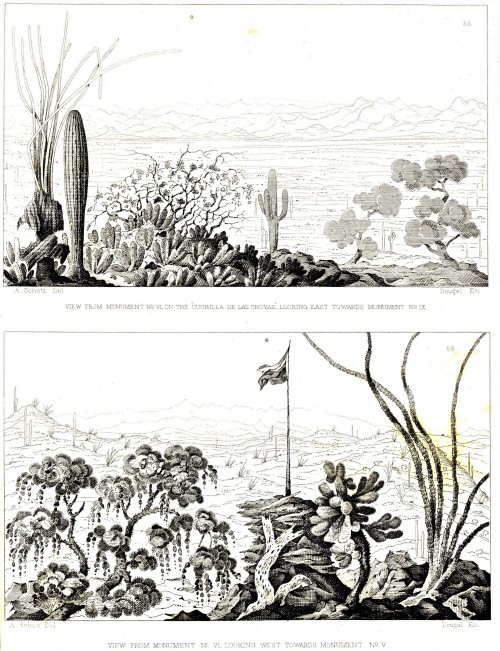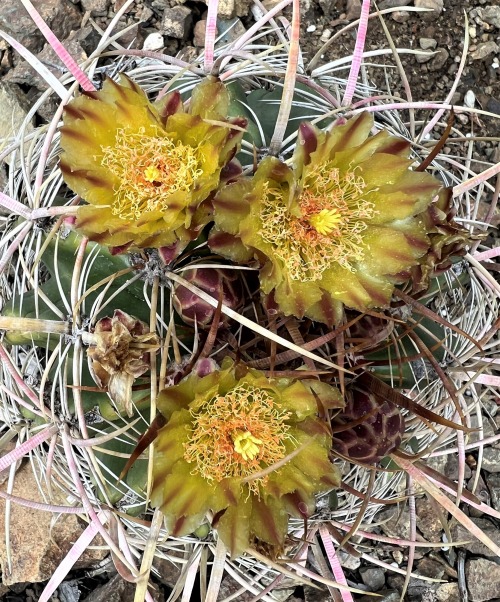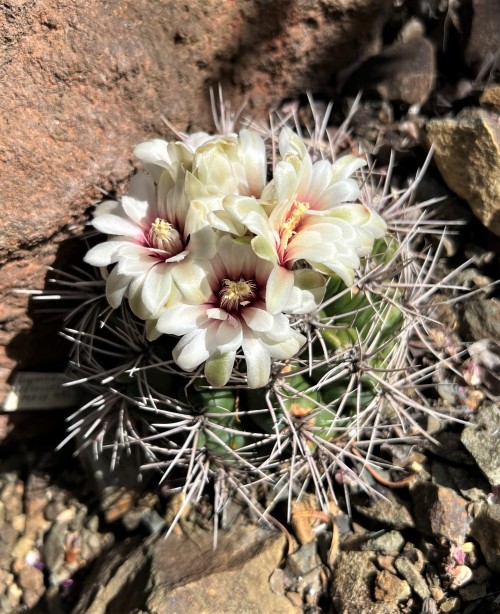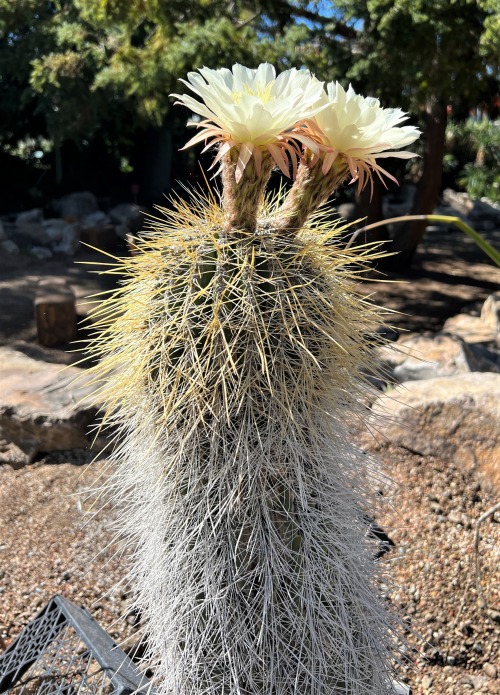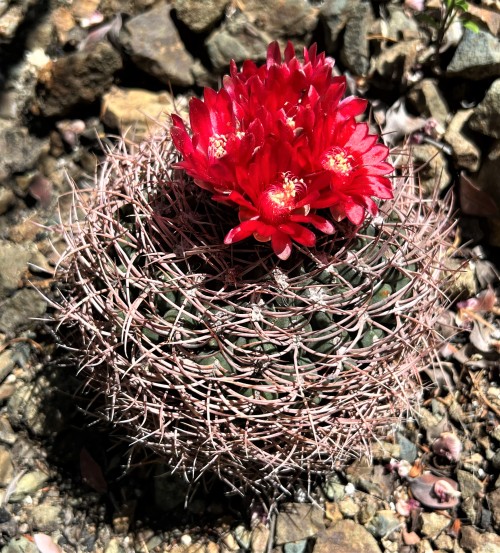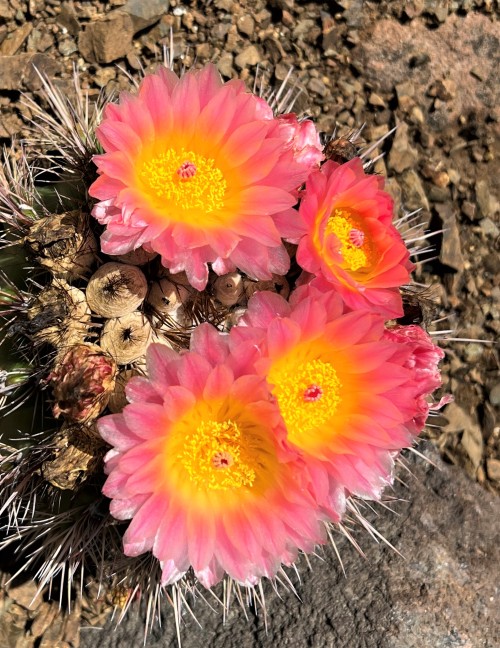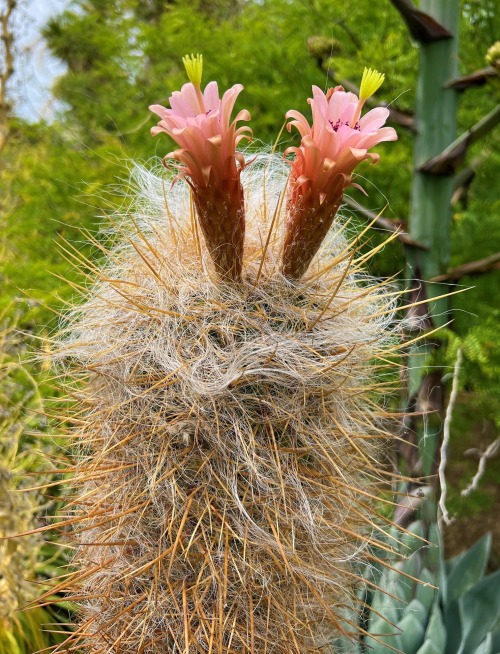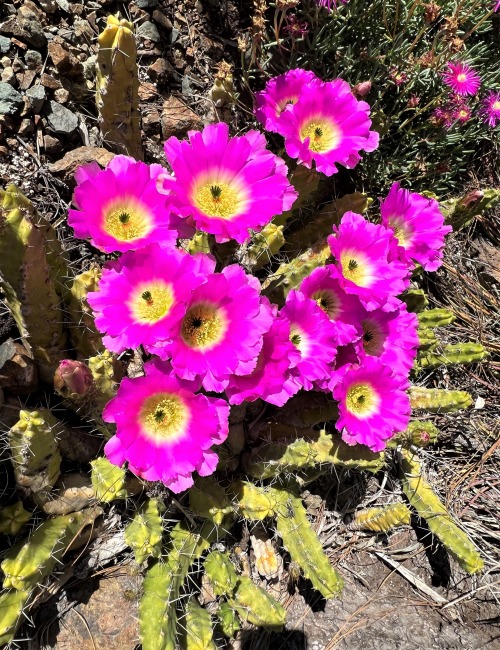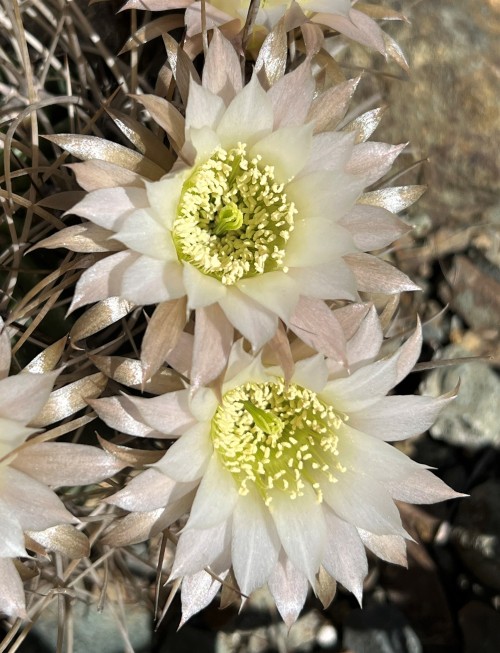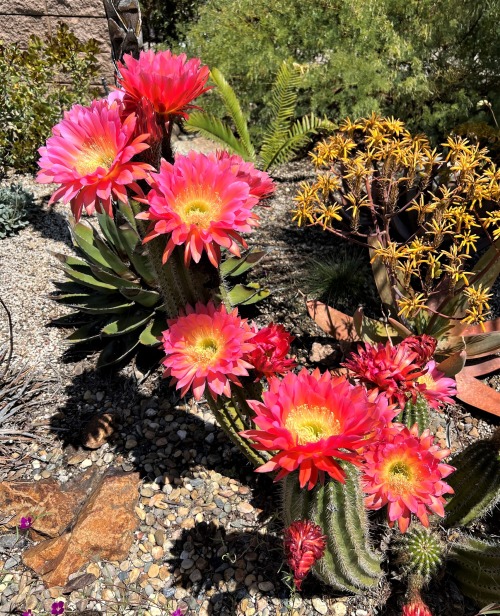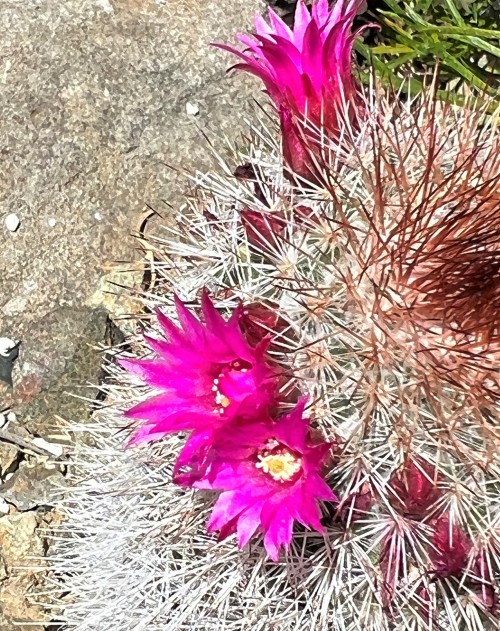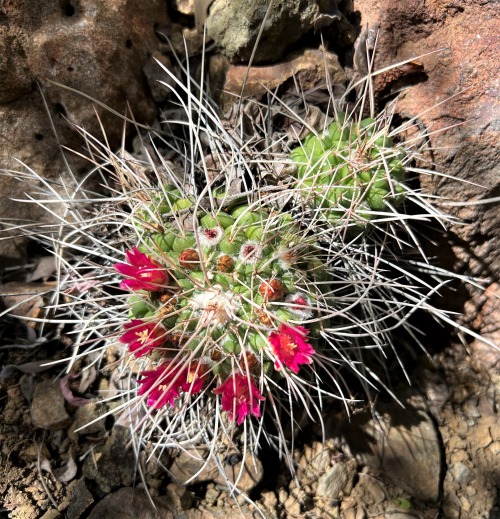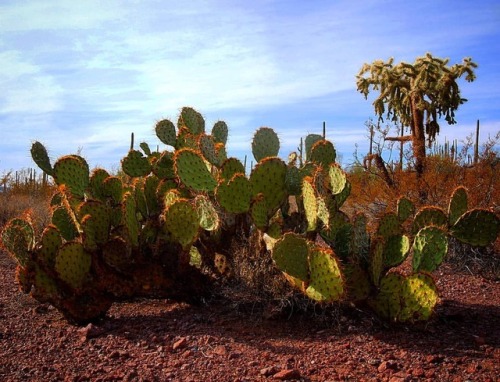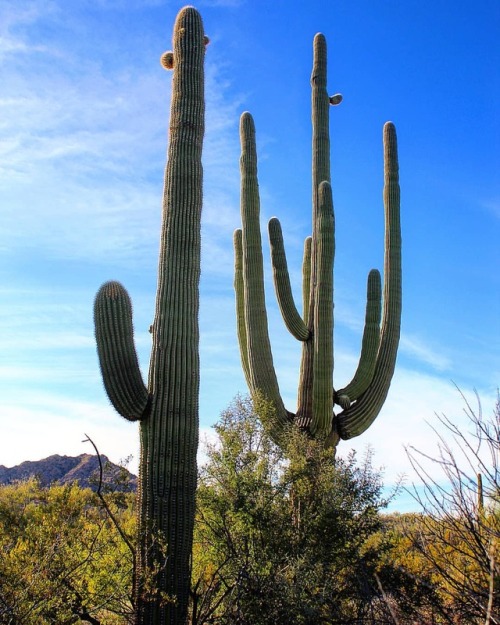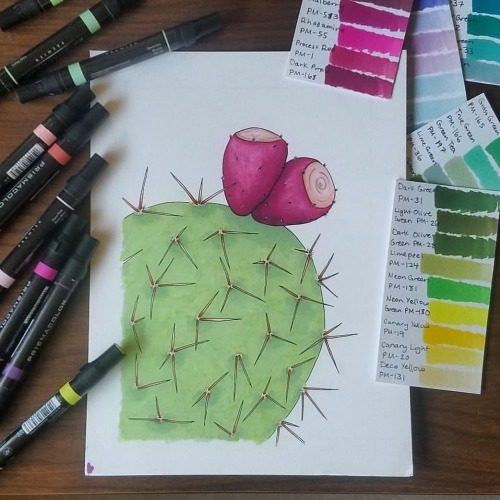#cactaceae
Science Saturday
Cacti along the U.S.-Mexican Border
From 1848 to 1855, the United States conducted a survey of the U.S.-Mexican border under the leadership of American surveyor and civil engineer William H. Emory. The survey established the border between the United States and Mexico as defined in the Treaty of Guadalupe Hidalgo, and the results were reported in this three-volume set, Report on the United States and Mexican Boundary Survey, published in Washington D.C. by government printer Cornelius Wendell from 1857-1859.
In addition to its documentation of the new boundary, the survey report was notable for its natural history content, including the most comprehensive vegetative investigation ever conducted on the 1,969 mile border between Mexico and the United States. Many botanists took part in different legs of the Survey, including the German-American botanist George Engelmann who wrote the section on Cactaceae.
The illustrations shown here, which include several species of cacti, are by the German-American artist and botanist Arthur Schott. The engravings were engraved by William Henry Dougal andJames David Smillie. The chromolithograph of Tohono O'odham (Papago) women harvesting Organ Pipe Cactus fruit was printed by the New York firm of Sarony, Major & Knapp.
ViewmoreScience Saturdayposts.
Post link
Opuntia microdasys
This is a common cactus in cultivation, with a charming appearance and the innocuous common name of “bunny ears”. But let the buyer beware! Though lacking large spines to stab someone, it has an abundance of tiny glochids, which may look furry and cute, but easily get embedded in skin and are a pain to remove. It is best used far enough back in a garden bed that nobody will accidentally brush against it. If precautions are taken, it is an attractive garden plant with showy yellow flowers in late spring. It is widespread in central and northern Mexico, and is closely related to Opuntia rufida, which comes from a little farther north and can be found in northern Mexico and in Texas. Some classifiers lump O. microdasys into O. rufida.
-Brian
Post link
Ferocactus viridescens
Cacti in the genus Ferocactus are often referred to as barrel cacti, and some of them are quite barrel-like in size, but Ferocactus viridescens is a smaller plant, typically less than a foot in diameter (30 cm). The name “viridescens” means “becoming green”, and this refers to the flowers, which may be yellow, yellowish-green, or yellow with a purplish midstripe, as seen in the photos above. This plant grows in the San Diego area in southern California, and also southward into northwestern Baja California. It is a rare example of a cactus restricted to winter-rainfall habitats, a trait it has in common with some cacti from central Chile.
-Brian
Post link
Gymnocalycium mostii (G. valnicekianum)
We received this cactus, from Cordoba Province in Argentina, under the name Gymnocalycium valnicekianum, but it has now been lumped into G. mostii. The large flowers look dirty-white when they are closed, but they are stunning when open, the pearly white of the petals fading to red at the center, with a tuft of white stamens within.
-Brian
Post link
Trichocereus bertramianus
This tall, bristly-spined cactus is part of the Trichocereus tarijensis group, native to southwestern Bolivia and across the border in northwestern Argentina. While T. tarijensis itself has a magenta-pink flower, T. bertramianus has pure white flowers. Some classifiers treat bertramianus as a subspecies of T. tarijensis, and still others treat it as a synonym under that species. For a time, all of the Trichocereus species were lumped into Echinopsis, but this drastic lumping effort has been walked back. Under any name, T. bertramianus is a striking plant.
-Brian
Post link
Echinocereus rigidissimus subsp. rubispinus
While some species of Echinocereus have wild spines and a ferocious appearance, others like E. rigidissimus have neat spines which are pressed closely against the body. This species occurs in both the United States (Arizona and New Mexico) and to the south in Mexico (Sonora and Chihuahua). The subspecies rubispinus (the “ruby-spined” cactus, also known as the rainbow cactus) is from Chihuahua, in the southeastern part of this range. Though the huge flowers do not last long, they are a breathtaking sight.
-Brian
Post link
Gymnocalycium oenanthemum
This wonderful cactus, a little bigger than a tennis ball, is native to Catamarca Province in Argentina. Its vivid red flowers are a contrast from the pink, white, or off-white colors usually seen in the genus. The name alludes to the color, since it means “wine flower”.
-Brian
Post link
Notocactus roseoluteus
This wonderful cactus produces an extraordinary number of large pink-and-yellow flowers every year (several dozen). It comes from Uruguay, and cactus classifiers disagree on what to call it. In Taxonomy of the Cactaceae, Joel Lode considers it to be a variety of Notocactus herteri. In David Hunt’s New Cactus Lexicon, he does not even recognize the genus Notocactus, preferring to lump these plants into Parodia. He includes it in an expanded concept of Parodia mammulosa (= Notocactus mammulosus). At the Ruth Bancroft Garden, we are happy to keep calling it Notocactus roseoluteus until the dust settles.
-Brian
Post link
Oreocereus celsianus
Oreocereus celsianus is a columnar cactus native to the Andes in northern Argentina and adjacent Bolivia. Its long white hairs give it the common name of “old man of the Andes”. Its tubular pinkish flowers have greenish stigmas extending outward like little hands.
-Brian
Post link
Echinocereus pentalophus
This cactus comes from east-central and northeastern Mexico, and people seeing its rubbery yellow-green stems often wonder why we bother to grow it. But then it flowers, and nobody wonders any more.
-Brian
Post link
Soehrensia grandis
With all of the changes in cactus taxonomy, it is sometimes hard to know what to call plants. This cactus from Argentina was first named as Soehrensia grandis, then moved into Trichocereus, then lumped into Echinopsis, then put into Lobivia. It is allied to the other cacti originally included in Soehrensia, and is intermediate between the yellow-flowered Lobivia (or Soehrensia) formosa and the red-flowered Lobivia (or Soehrensia) bruchii. These stout cacti get much larger than other plants placed in Lobivia, and might be thought of as South American barrel cacti.
-Brian
Post link
Mammillaria parkinsonii
Mammillaria is a large genus (one of the largest in the whole Cactus Family), and many of the species are found in Mexico. This is true of Mammillaria parkinsonii, which occurs in the east-central part of the country. Its heads divide as it grows, making a many-headed clump in time. The rings of wool around the center of each head are part of its charm.
-Brian
Post link
Lobivia ferox
Most of the species in Lobivia are native to northwestern Argentina and southern Bolivia, and the genus name is an anagram of Bolivia. They are generally on the small side, and they are very variable in flower color. Even Lobivia ferox, pictured here, has forms with various flower colors. The white-flowered form seen in the photos has especially impressive spines, and it seems remarkable that the flowers find their way through the thicket. From northern Argentina.
-Brian
Post link
Echinopsis hybrids
This is a spectacular time of year for Echinopsis hybrids, and four examples are included here, all in flower today at the Ruth Bancroft Garden. These cacti have been developed by crossing species from the southern half of South America, many from Argentina and southern Bolivia. Their parentage includes species in several related genera, including Trichocereus, Lobivia and Echinopsis. For a time, all of these were lumped together in a greatly enlarged version of the genus Echinopsis, but there were taxonomic problems with this, and the former genera have now been reinstated. However they are classified, they have very showy flowers and make a big impression on visitors to the garden. The four plants pictured are 1) an unnamed hybrid of Lobivia bruchii, 2) Echinopsis ‘Cherry Red’, 3) Echinopsis ‘Epic’, 4) Echinopsis ‘Flying Saucer’.
-Brian
Post link
Mammillaria rhodantha
This little short-cylindrical cactus comes from south-central Mexico. Its spines start out reddish-brown, but soon fade to white. When it flowers, its bright magenta blossoms really call attention to it. The flowers come in a ring, but the ones on the south side open first.
-Brian
Post link
Mammillaria compressa
Mammillaria is a very large genus in the Cactus Family, with many species sporting wonderful spines. Mammillaria compressa has a big distribution in east-central and northeastern Mexico, but the form pictured has especially long spines. The pinkish-red flowers come in a ring around the plant’s growing point, as is often seen in the genus.
-Brian
Post link









Cactus bloom roundup: Astrophytum capricorne, Echinocereus poselgeri, Epithelantha micromeris, Echinocereus dasyacanthus, Echinocereus pentalophus, and Echinocereus chloranthus. All but the astrophytum are native to Texas, though that species occurs in the neighboring Mexican state of Coahuila.

March started off rough with an unusually late freeze and Monday’s storms and tornado outbreak. Fortunately we had no damage here at the house. The wildflowers are on a delay thanks to an atypically cold and dry February, as are most of my plants, but this Echinocereus reichenbachiivar.albispinus is ready to kick off the spring flowering season.
Opuntia engelmannii & Cylindropuntia fulgida
#cactaceae #botany #plants #Arizona #sonorandesert #biodiversity #cactus #cholla #pricklypear #botanizing #succulents #ecology #spines #notouching #desert #aridlands #opuntia #cylindropuntia #sky
Post link
I sure do love a good barrel cactus.
Ferocactus wislizeni.
#botany #cacti #cactaceae #biodiversity #sonorandesert #Arizona #desert #desertplants #succulents #xeric #nature #fruits #plants #nativeplants #plantoftheday
Post link
One cannot have enough saguaro in their life
.
.
.
#Carnegieagigantea #cacti #botany #SonoranDesert #Arizona @organpipenps #biodiversity #cactaceae #cactus #cactuslove #succulents #nativeplants #evolution #desertplants
Post link
Echinocereus triglochidiatus / Claret Cup Cactus
Dryland Mesa, Denver Botanic GardensAfter snapping the previous photo, I turned the lens back and realized I had a just as impressive composition to capture. Too often we are quick to eliminate signs of decay, death, and decomposition in our own gardens.
Post link
The pun to go along with this @plantlovestories piece is “We make a prickly pair!”
#Opuntia #pricklypear #tuna #Cactaceae #PlantHeartArt #PlantLoveStories #ValentinesDay #puns #plantlove #plants #love #botanize #art #science #scientificillustration #botanicalillustration #illustration #plantart #markerart #prismacolor #markers #penandink #cactus
https://www.instagram.com/p/B8z85BugVqE/?igshid=kwcrpnxlag5n
Post link





